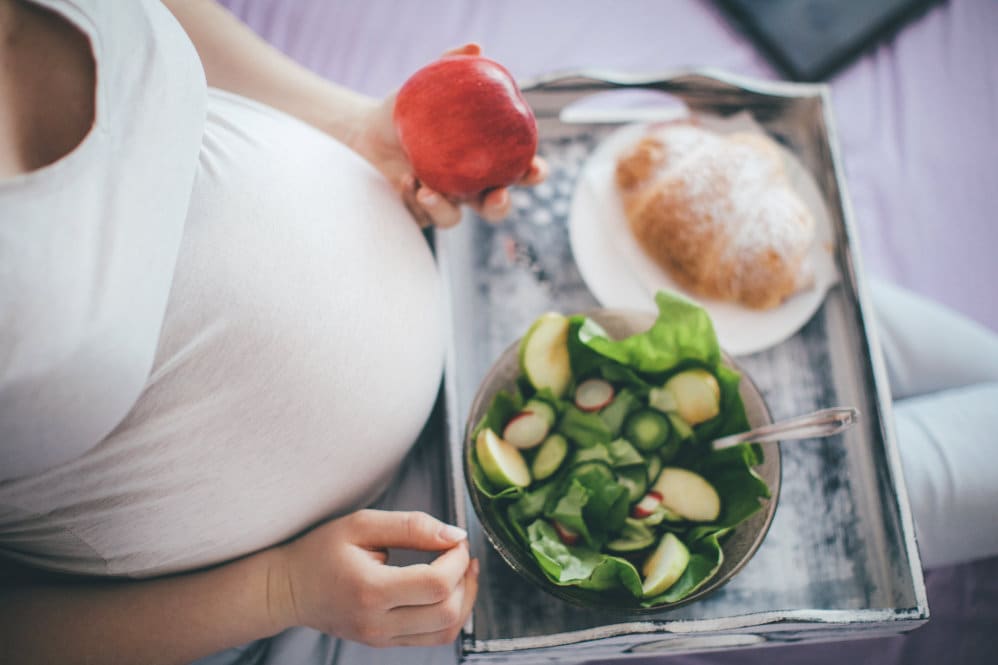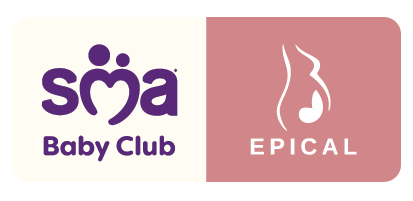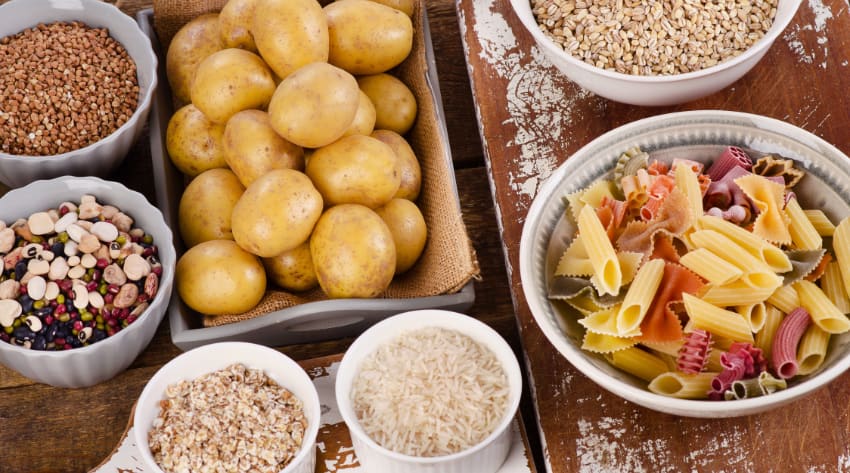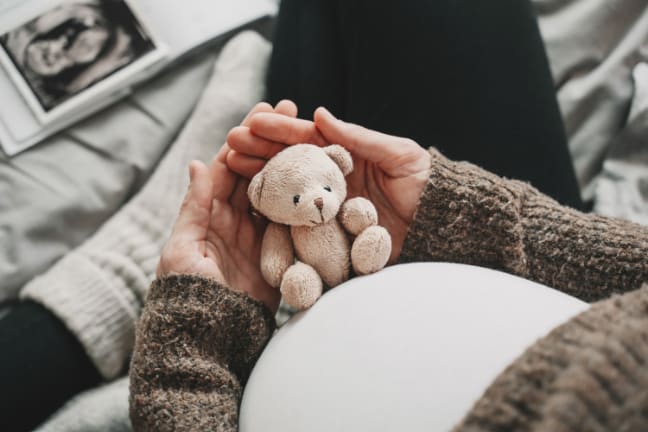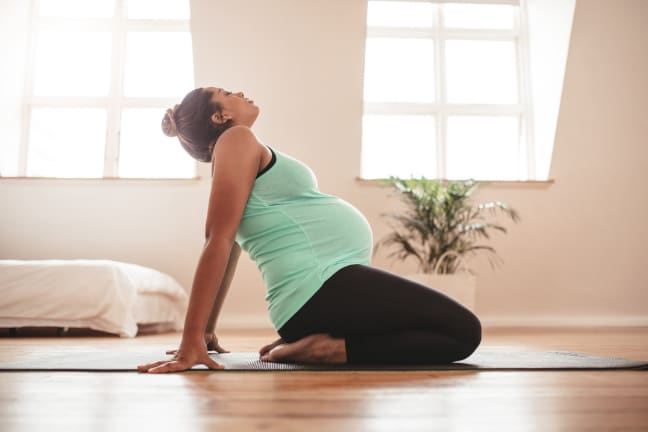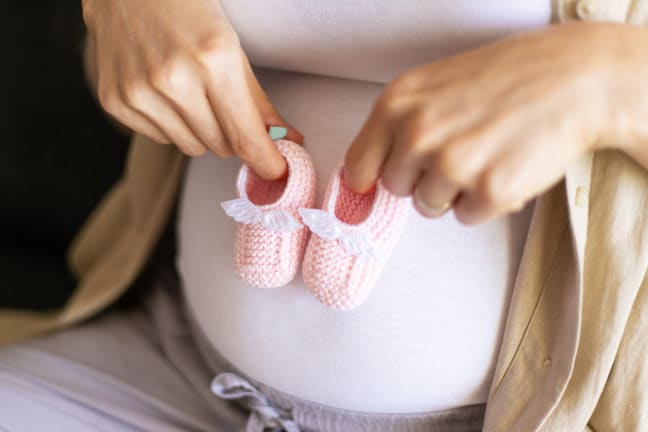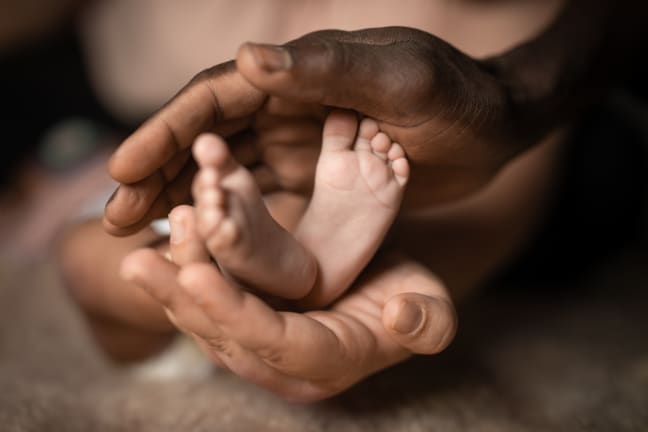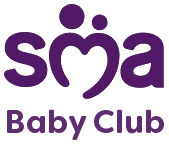Introduction
At week 34 your baby may have already started moving down into the pelvis in preparation for the big day. As your baby is taking up a lot of room you may prefer to eat smaller meals, or little and often, find out more on the types of food you should eat in this article. Feeling lower back pain or pelvic pain? This is quite normal read our advice to help reduce the pain and ease the symptoms. It’s time to get ready for labour as there is a lot to think about, we have you covered read about this and other things on what to expect at 34 weeks pregnant.
What happens at 34 weeks pregnant?
Your baby’s been inside for eight whole months now. And the size of baby at 34 weeks is the size of a cantaloupe melon. Can you believe it’s only a few weeks until you meet? Right now, they’re building up layers of fat to keep themselves nice and warm in preparation for life outside the womb. If you’re having a boy then around this time his testicles descend from the abdomen to the scrotum. When he’s first born these may look enlarged due to swelling caused by excess fluid or hormones, but they’ll go down shortly afterwards.
The part of your baby’s ears that send messages to their brain is called the cochlea. This is becoming more mature which means at this stage baby recognises your voice and maybe your singing and your musical taste.
Baby may have already started to go down into your pelvis but won’t get completely in place until about 36 weeks for first-time mums, and later for subsequent births.
The good news is that if baby decides to arrive now, they will have developed enough for a fairly normal delivery. By now their brain is fully developed and their lungs are quite well developed too. The size of your baby at this point also means they probably wouldn’t need extensive medical intervention. As long as there are no additional complications they should be fine.
What happens to your body at 34 weeks pregnant?
Feeling out of breath at times? It’s usually when your growing baby starts putting pressure on your diaphragm and lungs. Not to worry, this feeling should disappear naturally once your baby moves down in preparation for birth. In the meantime, find positions that allow your lungs to expand properly whenever you feel short of breath. If the breathlessness continues, contact your GP or hospital.
Your body knows what it needs to do now. Over the next few days and weeks baby will start to move into place, hopefully easing any breathlessness and your pelvis will begin to widen accordingly. But if they’re feeling heavier, you may be experiencing tension or a spreading pain in your lower abdomen. This is totally normal: your pelvic joints are loosening up, pulling on your ligaments.
You might even feel twinges or tugs of pain in your abdomen or pelvic area as baby’s head moves into position. This is often referred to as the baby ‘dropping’ or ‘lightening’. Some women feel it weeks before labour and others just hours before – usually if they’ve had a baby before. Both are totally normal. But if you’re experiencing regular or constant pain, contact your GP or hospital.
Baby may have already started to go down into your pelvis, but they won’t settle completely in place until about 36 weeks for first-time mums and later for those who’ve been here before.
What to eat at 34 weeks pregnant?
Baby is taking up lots of room in there so if you find yourself feeling full and bloated, try to eat three smaller meals a day rather than three big ones. Try starchy foods for lunch and dinner, as they’re a great source of complex carbohydrates and will provide you with a consistent source of energy over the day. Pasta, rice, potatoes or pulses such as beans and lentils are your friends. However, try to keep sweet foods such as cakes and chocolate for small, occasional treats. You don’t really need to ‘eat for two’ but if you fancy an extra portion of something, why not? An extra 200 calories a day is fine at this stage.
Here’s a few snacks that contain plenty of good nutrition for you and baby:
- Malt loaf and low-fat butter
- Cream cheese and banana on toast
- Veggie crisps with houmous
- Mashed avocado on crackers
- Toasted waffles with almond butter and pear
What are the symptoms of 34 weeks pregnant?
Week 34 pregnancy symptoms can include pelvic and lower back pain. This is quite normal and is usually caused by the growing weight of your baby. As your baby start moving further down into your pelvis, in preparation for birth, you may find walking a little harder.
Some women may develop pregnancy related pelvic girdle pain (PGP), which is caused by stiffness of your pelvic joints or the joints moving unevenly at either the front or back of your pelvis. This condition usually affects 1 in 5 women during their pregnancy and symptoms include:
- Pain that spreads to your thighs
- Pain in the pubic bone at the front and centre
- Pain across your lower back
- Pain in the perineum (the area between your vagina and anus)
If you are concerned speak to your GP, they may refer you to a physiotherapist. There are some know tips that can help ease the symptoms:
-
Make sure you maintain good posture when sitting or standing. Sit on a firm chair with a rolled towel or cushion to support the lower back
-
When sleeping, try sleeping on your side with a pillow between your knees and under your bump – or invest in a pregnancy pillow
-
Keep active but avoid exercise which makes the pain worse. Regular low-impact exercise using light to moderate effort such as swimming (although avoid breaststroke) and exercises designed for pregnancy such as antenatal yoga
-
Wear supportive shoes and a supportive bra to help with your posture
-
Put equal weight on each leg when standing and avoid twisting and bending movements
-
Keep your knees together when getting in and out of a car and when getting out of bed in the morning
-
Avoid sitting or standing for long periods, going up and down stairs too often in a day and lifting heavy objects. Online shopping may be the way to go!
Preparing for labour
Before you know it you’ll be meeting your little one for the first time. Just got to get through that labour bit.
You’ve probably already considered many of your options for labour day by now if you’ve been attending ante-natal classes, but there’s still things you might want to look into. From hypnobirthing and birthing pools to the position you want to adopt for the big push, there’s lots to think about.
Packed your hospital bag yet? Now’s the time. Here’s a hospital bag checklist to make sure you’re ready to go as soon as baby is.



